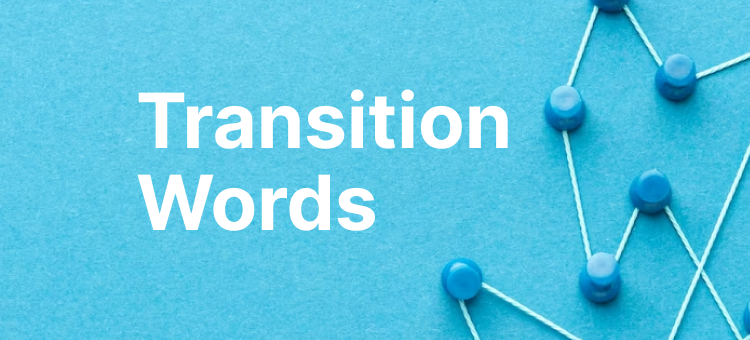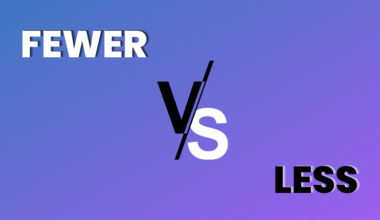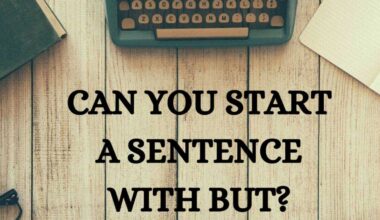Are you passionate about writing or maybe circumstances make it mandatory to write often? Well, that’s one way I will describe a student’s life.
Either way, writing has become an essential part of our daily lives. From note-taking to journaling to professional writing, exhibiting some flair is necessary, I believe.
The question now is, do you feel a flow of thoughts whenever you write, or do your ideas simply sound distant from one another every time? Worry not!
In this blog post, you will be introduced briefly to the use of transition phrases, what they are, some examples and how you can use them to enhance your writing to sound like a professional each time.
Can you start a sentence with moreover? This writing will take you deeper into the use of the transitional phrase.
What Are Transition Phrases?
Transition words are words that link sentences and paragraphs together smoothly so that there are no abrupt breaks between ideas.
They bridge the different parts of your writing and ensure a logical flow in your communication. Now let’s look at a couple of transition phrases and the categories they fall under based on their usage.
To compare: whereas, on the other hand, although, meanwhile, compared to.
To add: moreover, in addition, furthermore, adding up
To show exception: in spite of, despite
To summarize: in conclusion, addition, as I have shown, on the whole, consequently
To give an example: for instance, to demonstrate, to illustrate
To show sequence: first, second, thirdly, consequently, previously, finally
To show time: immediately, as soon as, thereafter
Basic Definition Of Moreover
“Moreover” is an adverb that means “in addition to what has been said. It adds a formal tone to writing and is often used in academic and professional settings.
The word is used to change over into additional information or connect a sentence to a related one that has already been said.
“Moreover”, is a persuasive term that further builds up an argument.

Just like other transition words, it is also known as a conjunctive adverb.
What is a conjunctive adverb?
A conjunctive adverb is a word that shows a connection between two sentences. They are adverbs that act in a similar way to conjunctions.
Conjunctions may modify a single word but conjunctives go deeper to modify the whole clause to express a connection. Now let’s take a look at the big question.
Can You Start A Sentence With Moreover?
Yes, “moreover” can be used at the beginning of sentences. This placement captures the reader’s attention, signaling that more vital information is to follow.
The first independent clause is written and ends with a period followed by the conjunctive adverb, a comma, and the second independent clause.
Examples;
1. Yen was a good player. Moreover, he scored all the goals in yesterday’s match.
2. Moreover, the new content strategy resulted in a significant increase in traffic to the client’s website.
3. Moreover, it often doesn’t work.
4. Moreover, the restaurant’s dinner menu is quite comprehensive.
5. Moreover toward evening, as if everything conspired to make the woman more anxious, a terrible piece of news about her daughter’s demise was added.
The word “moreover” is used not only at the beginning of sentences but can assume different positions in a sentence. Let’s look at other use cases.
In The Middle Of A Sentence
As another option, the transition word can be used in the middle of a sentence to create coherence between ideas.
Example; The weather was perfect for the match. Moreover, the cool weather worked well for the players.
The car looked good; moreover, the price was right.
At The End Of A Sentence
Using the word “moreover’ at the end of a sentence is a strong way of making a concluding sentence. It doesn’t only complete a statement but leaves a lasting effect on it.
For example; The team not only completed the work on time but also delivered excellently. Moreover.

When To Use Moreover
Generally, the word is used to introduce new information or emphasize an existing point in a sentence. Let’s look at some instances.
To express similarity
“Moreover” can tell that the subsequent information it begins with aligns with or adds up to the previous point.
For example: The job far provided valuable opportunities. Moreover, it offered thoughtful sessions.
To Present New Information
If you want to introduce fresh facts or evidence to support an argument, “moreover” is a good word choice.
For example; The latest research revealed promising growth prospects for the business. Moreover, we have better customer reviews.
To Indicate Contrast
You can effectively link opposing ideas to highlight the differences between them. This offers a better understanding of the subject matter.
For example; The company experienced a drop in sales. Moreover, competitors saw an exponential growth.
To Emphasize A Point
You can use the word to reinforce the significance of
For example; The school not only focuses on academic excellence but fosters a sense of community. Moreover, it encourages students to pursue extracurricular activities.
Common Mistakes To Avoid When Using Moreover
As essential as the term can be to your writing, you should look out for and try your best to avoid the following mistakes.
Overusing The Term
Forcing the term “moreover” in every part of your writing can distract your readers. It makes you sound repetitive or monotonous. Instead, opt for other transition words that can help you lay the needed emphasis.
By using different transition words, you make your writing interesting and maintain a natural flow.
Incorrect Usage
Moreover, just like any other transition word is used to present a logical flow between ideas. Do not use the term if no additional or supporting information follows.
In the case there is a piece of additional information, ensure it is relevant and adds more meaning to the context.
Let’s look at some examples of incorrect usage of the transition word ”moreover”
1. She was late for her appointment yesterday. Moreover, I was out shopping.
This is an incorrect usage of the term because the two ideas are not related. The fact that she was late for her appointment yesterday has nothing to do with you going out shopping.
In this case, moreover doesn’t fit here. You would want to consider using a different word or leaving out the transition altogether.
2. The lady loves painting. Moreover, the dog started barking immediately.
Here the second statement doesn’t expand on the first and the use of moreover rather causes a disruption in ideas.

Tips For Effective Use Of Transition Words
With the question “can you start a sentence with moreover” answered, let’s look at some tips on the effective use of transition words to improve your writing.
Readability and flow
Transition words present a logical flow in your writing and make it easier to follow. Do not use “moreover” just because you think you need a transition word. You should consider it when expanding on a previous point.
When using it at the beginning of a sentence, you should ensure it naturally fits it and doesn’t sound forced.
Proofreading and editing
You can have someone else review your work, and possibly read it out to be sure the transitions feel smooth. Try using other transition words to avoid repetition
Try writing tools
Writing tools like Grammarly can help you spot the incorrect or over usage of “moreover”. It offers alternative suggestions. It highlights wrong sentence structure which is a great way to check for smooth transitions.
In Summary
To answer the main question “Can you start a sentence with moreover?”, yes you can. However, it is important to keep in mind that this should be done strategically in a way that enhances the flow of communication.
Always proofread your work and edit it to ensure it is readable. You can also try writing tools to help restructure your sentences and position your transition words correctly.
With this knowledge on “can you start a sentence with moreover”, I can say you are ready to start practicing with your transitions.
Share to enlighten others.







